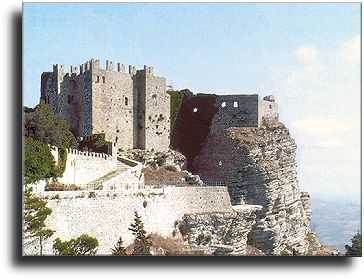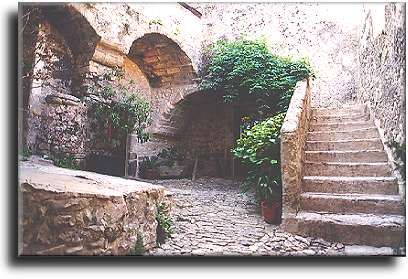INFN ELOISATRON PROJECT
44th
Workshop
Project Director: A. Zichichi
QCD at Cosmic Energies
The Highest Energy Cosmic Rays and QCD

August 29 - September 5, 2004
Erice, Italy
Workshop Directors:
Yuri Dokshitzer (Paris-VI), Mark Strikman (Pennstate Univ),
Gabriele Veneziano (CERN)
Agenda:
The aim of the Workshop is to discuss issues of common interest
for the highest energy cosmic ray physics (in particular, near the GZK
cutoff) and forward physics at LHC, in particular those related with a
new regime of strong
interactions expected to emerge at these energies.
The QCD understanding of this new regime has implications for
modeling cosmic showers. Furthermore, cosmic ray
experiments may provide an important insight into quark-gluon
interactions at extreme gluon densities.
The Workshop will bring together experts in high energy QCD and
cosmic ray physics in view of expanding the mutually beneficial
interface
between experiments planning to explore forward physics at LHC and
highest energy cosmic ray experiments.
Day 1
Alexander
Dolgov: Big Bang and
Heavy Particles
Ralph
Engel:
Current
models of cosmic ray
propagation in atmosphere
Giuseppe Marchesini: QCD
MC modeling at super-high energies
Kenji Shinozaki:
AGASA results
Afternoon
Discussion Session:
Theoretical challenges in
modeling high energy cosmic rays (Tom Gaisser)
Day 2
James
Beatty:
Auger project
Marcello Ciafaloni: Low-x QCD: the
(improved) perturbative picture
Leonid
Frankfurt: Color coherence
phenomena in QCD
Michael Kachelriess: Origin
of high-energy cosmic rays
Afternoon Discussion Session:
Forward physics
at colliders: experimental tasks and tools (Mark Strikman)
Day 3
Karsten
Eggert:
TOTEM
forward
physics at LHC
Francis
Halzen:
AMANDA
results
and Ice Cube project
Alfred
Mueller:
Partonic
Saturation at Very High Energies
Afternoon
Discussion Session:
Electroweak
interactions at super-high energies and cosmic rays; exotics
(Spencer Klein)
Day 4
Mike
Albrow:
Perspectives
of the QCD physics at FNAL
Igor Sokalski
:
The ANTARES
project: past, present and future
Raju Venugopalan: Color Glass
Condensates
Afternoon
Discussion Session:
Small x soft
and hard physics, strong interactions modeling
(Alexei Kaidalov)

Information
We would like you to fully
contribute to the lively intellectual
atmosphere of the Workshop.
Therefore you are cordially invited
to stay for the whole duration of the Workshop, if
possible.
The Workshop starts on Monday August 30 (a.m.) and ends on Saturday
September 4 (p.m.). One day will be free for excursion.
You are expected to arrive in Erice on Sunday
August 29 and to leave on Sunday
September 5.
Accomodation
The E.Majorana Centre will provide
accommodation for participants either in its living quarters or in the
Erice hotels.
All reservations will be made by the
E.Majorana Centre.
Please duly fill in and return as soon as
possible the Reservation Form.
Lodging
The
E. Majorana Centre provides single or double room accomodation in
the living quarters of the three Institutes (Rabi Institute-San Rocco,
Wigner Institute-San Domenico and Blackett Institute-San Francesco).
Depending on the number of participants, accomodation can be also
provided in various Erice hotels selected by the E.Majorana Centre.
The single/double room option should be specified in the Reservation
Form.
Meals
Breakfast is provided
daily at the Rabi Institute-San Rocco (from about
7:30 to 9:30 a.m.). If you stay in one of the Erice hotels your
breakfast will be provided by your hotel.
Coffee, tea and snacks are available at the lecture halls at coffee breaks later in the
day, and in San Rocco, around the clock.
For lunch and dinner, a
choice of meals is arranged at a few local
restaurants selected by the E.Majorana Centre. You sign for your meal,
but pay for your beverages. Service is included in the price of the
meal.
Local
Transportation
Transportation
by bus or car from/to the airport (railway station,
harbour) to/from Erice, on arrival/departure day, is provided by the
E.Majorana Centre. The drive to Erice takes about one hour.
The
information concerning your
arrival
and departure should be provided in advance to the
E.Majorana Centre Secretariat.
How to reach ERICE
By
road, there are two possibilities:
1) Drive along the
Autostrada del
Sole via Milan-Bologna-Florence-Rome-Naples-Villa San Giovanni (Reggio
Calabria), then take a ferry-boat from Villa San Giovanni to Messina
and drive on to Erice (350 Km from Messina).
2) Take the ferry-boat either from Genoa
or from Naples to
Palermo and then drive on to Erice (100 Km from Palermo); the places on
the ferry-boat should be booked in advance.
By
train: via Milan-Rome, you
can reach Palermo or Trapani directly.
By
air: the best way to
reach
Erice is by plane, landing either in Palermo (or in Trapani) airport.
If you are coming by
airplane from outside EU, please notice that luggage checked through to
Palermo (or Trapani) goes through customs there.
Packing
for ERICE
Summer weather in Erice is usually
hot at noon and pleasantly cool in the evening. Sometimes mists make it
quite chilly. Try to pack with all this in mind. A pullover sweater is
recommended. Be sure to bring rubber-soled shoes. The picturesque
cobbled streets of Erice are slippery as well as uneven.
Erice
Food
Some recommendations: the strong
Italian coffee (caffe/cappuccino), tuna-fish (tonno), sword-fish (pescespada), squids (calamari) and
seafood in general, cous-cous with
fish soup, eggplants (melanzane), and various delicious fresh fruits.
Erice
Shops
Many shops give up 10% discount to
people from the E.Majorana Centre.
Local specialties include coral jewelry, brightly decorated pottery, a
variety of sweet almond pastries, and woven rugs, shawls, or handbags.
Most stores are closed from about one to four in the afternoon. The
bank is open only until 1:00 p.m. on weekdays; it is closed on
Saturday and Sunday.
Sightseeing
in Erice
Everything in Erice is within walking
distance. Buses also go regularly
to Trapani, which has a beach and a railway station as well as boats to
the Aegadian (Egadi) Islands. Either your travel agent at home, or the
Secretariat of the E.Majorana Centre (at the Rabi Institute-San Rocco)
after you arrive in Erice, can help you rent a car if you wish. A car
is essential if you wish to make day trips to Palermo, Selinunte,
Agrigento, etc., or spend afternoons at the beautiful beach of San Vito
Lo Capo. Be forwarned, however, of the difficulties of having a car
here. Erice streets are very narrow, with few places to park. The road
down to the mountain is narrow, steep, and twisting.
The Ettore Majorana
Centre Institutes and Lecture Halls
The Ettore Majorana International Centre for Scientific Culture takes
its inspiration from the outstanding Italian physicist, after whom the
Centre was named. Born in Sicily in 1906, his breadth of vision and the
excellence of his contributions to theoretical nuclear physics moved
Enrico Fermi to the following comment: There are many categories of
scientists, people of second and third rank, who do their best, but do
not go very far. There are also people of first-class rank, who
make great discoveries, fundamental for the development of science. But
then there are the geniuses, like Galilei and Newton. Well, Ettore
Majorana was one of them.
Embracing 110 Schools, covering all branches of science, the Centre is
situated in the old pre-mediaeval city of Erice where three restored
monasteries (one of which was the residence of the Viceroy of Sicily
during the XIV and XV centuries) provide an appropriate setting for
high intellectual endeavour. These monasteries are now named after
great scientists and strong supporters of the Ettore Majorana Centre.
The San Francesco Monastery (former Viceroy's residence) is now the
Eugene P. Wigner Institute with the Enrico Fermi Lecture Hall. The San
Domenico Monastery is now the Patrick M.S. Blackett Institute with the
Paul A.M. Dirac Lecture Hall. The San Rocco Monastery is now the Isidor
I. Rabi Institute with the Richard P. Feynman Lecture Hall, the
Directorate and the main Secretariat of the Centre.
There are living quarters in all three Institutes for people attending
the Courses of the Centre.The Erice Station of the World Laboratory
Seismological Network is located in the Rabi Institute. The Daniel
Chalonge and the Paul A.M. Dirac Museums are situated at the Blackett
Institute.
Facilities
Various
facilities
are available for all
participants: basic stationary, fax and photocopy
services;
computers and printers: a
computer cluster is installed at the E.Majorana Centre (in San Rocco)
connected to the network, where temporary accounts for
participants can be obtained.
Poetic Touch
According to legend, Erice, son of Venus and Neptune,
founded a small town on top of a mountain (750 metres above sea level)
more than three thousand years ago. The founder of modern history -
i.e. the recording of events in a methodic and chronological sequence
as they really happened without reference to mythical causes - the
great Thucydides (~500 B.C.), writing about events connected with the
conquest of Troy (1183 B.C.) said: After the fall of Troy some Trojans
on their escape from the Achaei arrived in Sicily by boat and as they
settled near the border with the Sicananians all together they were
named Elymi: their towns were Segesta and Erice. This inspired Virgil
to describe the arrival of the Trojan royal family in Erice and the
burial of Anchise, by his son Enea, on the coast below Erice.
Homer (~1000 B.C.), Theocritus (~300 B.C.), Polybius (~200 B.C.),
Virgil (~50 B.C.), Horace (~20 B.C.), and others have celebrated this
magnificent spot in Sicily in their poems. During seven centuries
(XIII-XIX) the town of Erice was under the leadership of a local
oligarchy, whose wisdom assured a long period of cultural development
and economic prosperity which in turn gave rise to the many churches,
monasteries and private palaces which you see today.
In Erice you can admire the Castle of Venus, the Cyclopeans Walls (~800
B.C.) and the Gothic Cathedral (~1300 A.D.). Erice is at present a
mixture of ancient and mediaeval architecture. Other masterpieces of
ancient civilization are to be found in the neighbourhood: at Motya
(Phoenician), Segesta (Elymian), and Selinunte (Greek). On the Aegadian
Islands - theatre of the decisive naval battle of the first Punic War
(264-241 B.C.) - suggestive neolithic and paleolithic vestiges are
still visible: the grottoes of Favignana, the carvings and murals of
Levanzo. Splendid beaches are to be found at San Vito Lo Capo,
Scopello, and Cornino, and a wild and rocky coast around Monte Cofano:
all at less than one hour's drive from Erice.
List of
Participants
Albrow
Mike
FNAL,
USA
Avati
Valentina
CERN
Battistoni Giuseppe Italy
Beatty
James
USA
Bravina
Larissa
Norway
Ciafaloni
Marcello Italy
Deile Mario
CERN
Dokshitzer
Yuri
France
Dolgov Alexander INFN
Drescher Hajo
Germany
Dumitru
Adrian
Germany
Eggert
Karsten
CERN
Engel
Ralph
Germany
Farrar
Glennys
USA
Frankfurt
Leonid Israel
Gaisser
Tom
USA
Halzen
Francis
USA
Jalilian-Marian Jamal BNL,
USA
Kachelriess Michael MPI, Germany
Kaidalov
Alexei
Russia
Karliner
Marek
Israel
Klein
Spencer
LBL, USA
Marchesini Giuseppe Italy
Maor
Uri
Israel
Montaruli
Teresa
Italy
Mueller
Alfred
USA
Ostapchenko Serguei Germany
Panagiotou Apostolos Greece
Ranft
Johannes
CERN
Salam
Gavin
France
Sarytcheva Ludmila Russia
Sokalski
Igor
Italy
Stasto
Anna
DESY, Germany
Sterman
George
USA
Strikman
Mark
USA
Taylor
Cyrus
USA
Shinozaki
Kenji MPI,
Germany
Treleani
Daniele
Italy
Veneziano Gabriele CERN
Venugopalan Raju BNL,
USA
Whitmore
Jim
NSF, USA
Proceedings
The proceedings of the Workshop will
be published by World Scientific in the Science and Culture Series.
Invited speakers are therefore expected to provide a written version of
their contribution. Typing instructions (for Word and Latex) can be
found on the web site of WSPC. You may download the style file
here:
http://www.wspc.com.sg/style/proceedings_style.shtml
The trim size of the book is 9 by 6 inches.
FEMCCS Secretariat
Mr. Pino Aceto
Phone : (+39)-0923-869133 Fax :
(+39)-0923-869226
E-mail : hq@emcsc.ccsem.infn.it
Yuri Dokshitzer
Last modified: Thu Oct 7 15:11:38 CEST 2004

